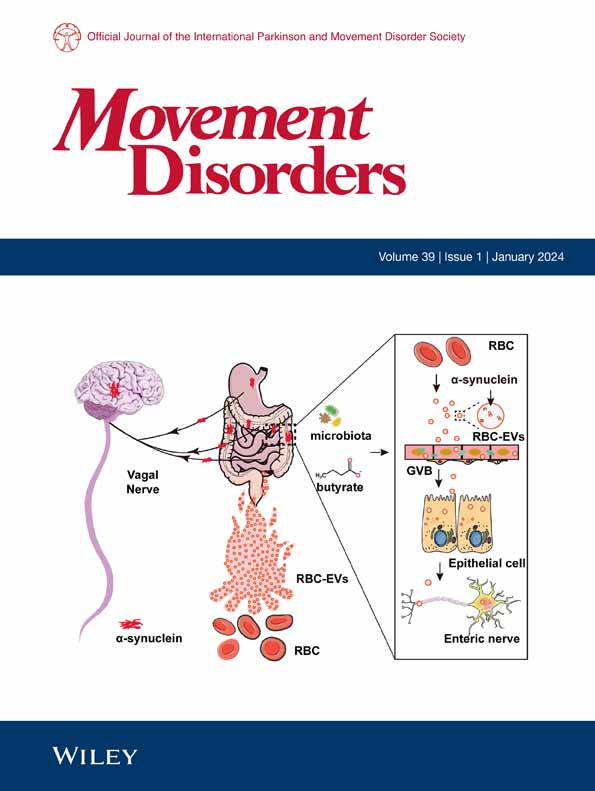Sasivimol Virameteekul MD, MSc, Andrew J. Lees MD, FRCP, FMedSci, Roongroj Bhidayasiri MD, FRCP
求助PDF
{"title":"小颗粒,大潜力:用于帕金森病药物传输的聚合物纳米粒子。","authors":"Sasivimol Virameteekul MD, MSc, Andrew J. Lees MD, FRCP, FMedSci, Roongroj Bhidayasiri MD, FRCP","doi":"10.1002/mds.29939","DOIUrl":null,"url":null,"abstract":"<p>Despite the availability of a number of efficacious treatments for Parkinson's disease, their limitations and drawbacks, particularly related to low brain bioavailability and associated side effects, emphasize the need for alternative and more effective therapeutic approaches. Nanomedicine, the application of nanotechnology in medicine, has received considerable interest in recent years as a method of effectively delivering potentially therapeutic molecules to the brain. In particular, polymeric nanoparticles, constructed from biodegradable polymer, have shown great promise in enhancing therapeutic efficacy, reducing toxicity, and ensuring targeted delivery. However, their clinical translation remains a considerable challenge. This article reviews recent in vitro and in vivo studies using polymeric nanoparticles as drug and gene delivery systems for Parkinson's disease with their challenges and future directions. We are also particularly interested in the technical properties, mechanism, drugs release patterns, and delivery strategies to overcome the blood–brain barrier. © 2024 International Parkinson and Movement Disorder Society.</p>","PeriodicalId":213,"journal":{"name":"Movement Disorders","volume":"39 11","pages":"1922-1937"},"PeriodicalIF":7.4000,"publicationDate":"2024-07-30","publicationTypes":"Journal Article","fieldsOfStudy":null,"isOpenAccess":false,"openAccessPdf":"","citationCount":"0","resultStr":"{\"title\":\"Small Particles, Big Potential: Polymeric Nanoparticles for Drug Delivery in Parkinson's Disease\",\"authors\":\"Sasivimol Virameteekul MD, MSc, Andrew J. Lees MD, FRCP, FMedSci, Roongroj Bhidayasiri MD, FRCP\",\"doi\":\"10.1002/mds.29939\",\"DOIUrl\":null,\"url\":null,\"abstract\":\"<p>Despite the availability of a number of efficacious treatments for Parkinson's disease, their limitations and drawbacks, particularly related to low brain bioavailability and associated side effects, emphasize the need for alternative and more effective therapeutic approaches. Nanomedicine, the application of nanotechnology in medicine, has received considerable interest in recent years as a method of effectively delivering potentially therapeutic molecules to the brain. In particular, polymeric nanoparticles, constructed from biodegradable polymer, have shown great promise in enhancing therapeutic efficacy, reducing toxicity, and ensuring targeted delivery. However, their clinical translation remains a considerable challenge. This article reviews recent in vitro and in vivo studies using polymeric nanoparticles as drug and gene delivery systems for Parkinson's disease with their challenges and future directions. We are also particularly interested in the technical properties, mechanism, drugs release patterns, and delivery strategies to overcome the blood–brain barrier. © 2024 International Parkinson and Movement Disorder Society.</p>\",\"PeriodicalId\":213,\"journal\":{\"name\":\"Movement Disorders\",\"volume\":\"39 11\",\"pages\":\"1922-1937\"},\"PeriodicalIF\":7.4000,\"publicationDate\":\"2024-07-30\",\"publicationTypes\":\"Journal Article\",\"fieldsOfStudy\":null,\"isOpenAccess\":false,\"openAccessPdf\":\"\",\"citationCount\":\"0\",\"resultStr\":null,\"platform\":\"Semanticscholar\",\"paperid\":null,\"PeriodicalName\":\"Movement Disorders\",\"FirstCategoryId\":\"3\",\"ListUrlMain\":\"https://onlinelibrary.wiley.com/doi/10.1002/mds.29939\",\"RegionNum\":1,\"RegionCategory\":\"医学\",\"ArticlePicture\":[],\"TitleCN\":null,\"AbstractTextCN\":null,\"PMCID\":null,\"EPubDate\":\"\",\"PubModel\":\"\",\"JCR\":\"Q1\",\"JCRName\":\"CLINICAL NEUROLOGY\",\"Score\":null,\"Total\":0}","platform":"Semanticscholar","paperid":null,"PeriodicalName":"Movement Disorders","FirstCategoryId":"3","ListUrlMain":"https://onlinelibrary.wiley.com/doi/10.1002/mds.29939","RegionNum":1,"RegionCategory":"医学","ArticlePicture":[],"TitleCN":null,"AbstractTextCN":null,"PMCID":null,"EPubDate":"","PubModel":"","JCR":"Q1","JCRName":"CLINICAL NEUROLOGY","Score":null,"Total":0}
引用次数: 0
引用
批量引用

 求助内容:
求助内容: 应助结果提醒方式:
应助结果提醒方式:


